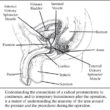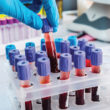Artificial Intelligence and Radiologists in Prostate Cancer Detection on MRI
A recent international study examined the ability of an artificial intelligence (AI) system to detect clinically significant prostate cancer on MRI scans, comparing it to that of experienced radiologists using the Prostate Imaging- Reporting and Data System version 2.1 (PI-RADS 2.1). The study involved over 10,000 MRI exams from more than 9,000 patients across multiple centers in the Netherlands and Norway. The AI system was trained to identify cancers classified as Gleason gradegroup 2 or higher, which are considered clinically significant.
MRI scans, comparing it to that of experienced radiologists using the Prostate Imaging- Reporting and Data System version 2.1 (PI-RADS 2.1). The study involved over 10,000 MRI exams from more than 9,000 patients across multiple centers in the Netherlands and Norway. The AI system was trained to identify cancers classified as Gleason gradegroup 2 or higher, which are considered clinically significant.
In a subset of 400 cases, the AI system demonstrated a statistically superior ability to detect significant cancers compared to 62 radiologists. Specifically, the AI achieved an area under the receiver operating characteristic curve (AUROC) of 0.91, outperforming the radiologists’ average AUROC of 0.86. Additionally, at the same specificity, the AI detected 6.8% more cases of significant cancer and reduced false positives by over 50%.
However, when compared to radiology readings from routine clinical practice, the AI system showed slightly lower specificity (68.9% vs. 69.0%) at the same high sensitivity (96.1%). This difference may be due to radiologists having access to additional patient information and peer consultations during routine practice.
Overall, the study suggests that AI can be a valuable tool in detecting significant prostate cancer on MRI scans, potentially aiding radiologists in managing their workload and reducing the risk of overdiagnosis. Further prospective studies are needed to confirm these findings and assess the clinical applicability of the AI system.
Lancet Oncol. 2024 Jul, PMID: 38876123

















